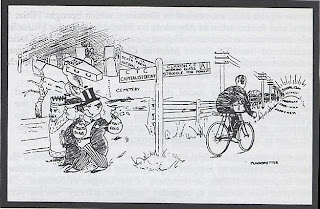HAYES COTTAGE HOSPITAL

Hayes Cottage Hospital, was successfully occupied by staff and the people of Hayes on Tuesday 25th October 1983 to stop its planned closure.
The Work-in by staff (25 nurses and 16 Ancillary staff) , supported by patients local doctors and the community secured massive public support from the comminity, leading to the Health Authority withdrawing the closure threat to 32 beded Hayes Cottage Hospital and Northwood & Pinner Hospital (also occupied)
Below are the names of those people who stood by the hospital and did at least one shift on the 24 hour picket line at Hayes Cottage
HAYES COTTAGE OCCUPATION ROLL OF HONOUR
Phil Anderson, Central Avenue, Hayes (14)
Reg Allen, 122 Charnwood Rd, Hillingdon (8)
Megan Armstrong, Langmead Road, Hayes (8)
Catherine Alderton, The Green, West Drayton
John Allen, West Drayton
Ivor Anthony, 42 Barra Hall Road, Hayes
Vera Abrams
Pat Abrraham, Waterloo Rd, Uxbridge
David & Marge Bayne, 19, Grosvenor Avenue, Hayes (NUPE Steward Hayes Cottage Hospital)
Stephane Bayne, Grosvenor Avenue, Hayes
Eileen Birbridge Working at Hayes Cottage
Mike, Alice & Benn Bowe, Nine Elms, Cowley (23)
Seth Bateman, Orchard Road (19)
Pauline Ballinger, Grange Close, Hayes (11)
Ralph Benton West Drayton (11)
Gordon Bogan, 15 Bassett Road, Uxbridge (9)
Peter Batley, Carolyn Rd, Hayes NUPE Branch Sec
Carol Brewer, Briar Way, West Drayton
Maggie Broughton, 37 Warley Road, Hayes
Vivienne Brown, Fairey Avenue, Hayes
Paul Buck
Moira Bulmer, League of Friends
B. E Burbridge, Freemans Lane, Hayes
Keith Burns Dinganhill Close, Hayes
Roy Bands, 28 HuntersGrove, Hayes
Margaret Barber, Gledwood Drive
James Barton
Chrissie Beale
Linda & Lutetia Bennett, Snowden Ave, Hillingdon
Steve Clare, Botwell Lane, Hayes (Sec Hillingdon Health Emergency)
Andrea Campbell, COHSE Hackney
Jean Carey 4 Risholme Road, Harrow (Matron N&P Hospital)
Eddie Coulson NUPE full time officer
Tom Crow, Granville Road, Hillingdon (12)
Bernice Crow, Granville Road, Hillingdon (14)
Rashmi Chopra (13) Southall
Frank Cooper
Wally Collins, 24 Manor Way, Hayes
Martin Craxton, 26 Park Road Hayes
Arthur Cooper, 60 Mount Pleasant, Ruislip
Paul Crimmins, Nurses Home, Hillingdon
Fred Clarke, Nine Elms Close, Cowley
Sylvette Collins, Long Lane, Hillingdon
Peter Casey Adelaide Rd, West Drayton (13)
Keith Dobson, Candover Close, Harmondsworth (7)
Mouse Dismore, Park Road East, Uxbridge
Pete Denman TGWU Branch Secretary
Liz Dodd, Brunel University
Vic Davis, Fairey Avenue
D. J Davies
Malcolm Evans, Church Road, Hayes (12)
Eric “Ginger” Evans, 43 Judge Heath Lane (Patient)
Tim Evans, Longmead Rd, Ealing
Jackie Evans, 43 Judge Heath Lane, Hayes
Kate Evans, Normandy Drive, Hayes
Francis Evans
Tom Earnshaw
Peter Fagan, 107 Landsbury Drive, Hayes (9)
Val & John Frost, Balmoral Drive, Hayes (17)
Richard Farrell, Charnwood Rd, Hillingdon
Cyrese Fear, High Street Harlington
Eugene Finley, New Road, Harlington
Steve Field, Winnock Rd, West Drayton
Don Foale
Mrs Frank, (League of Friends)
Tony Fox, St Anselms Road, Hayes
Heather Follett
Geoff & Paulie Gray, Bell Avenue, West Drayton (10)
David Godwin, 46 Yeading Lane, Hayes (21)
Joanne Gray, Bell Avenue (10)
Georgina Gray, Bell Avenue
Harold Goodwin, 1 Towers Avenue, Hillingdon
Ossie Garvin, 44 Church Road, Hayes
Mary Gordon, Park Road, Uxbridge
Andy Graham, Gurnard Close, Yiewsley
Andy Grant
Helen Gray, Pinglestone Close, Harmondsorth
Maurice Gross, West Drayton
Eileen Heslin, Central Avenue, Hayes (34)
Ted Harris Westacott, Hayes (15)
Ted Helliker, Charnwood Rd, Hillingdon
Chris Hickey
Brenda Hitchcock
Daisy Hemp, Queens Road, Hayes
Peter Holley, Halsway, Hayes
Ann Holmes, Ethorpe Rd, Uxbridge
Thomas Hitchcock
Betty Hodgkins
Pauline & Derek Ives, Lynch Gate Walk, Hayes (10)
Les Jones, The Dingle, Hillingdon
George & Mary James
Terry Knowles, Longmead Rd, Hayes (9)
Madaline Arnold King, Vernon Park Rd, Harefield
Phil Kordun, 26 Chiltern View Rd, Uxbridge
S. Khumra, Spencer Avenue
Joe Kelly, Down Way, Northholt
Mandy Kent
W. Kelly Coldharbour Lane, Hayes
Simon Kaplan, Orchard Drive, Uxbridge
Julia Leonard, Portland Rd, Hayes (8)
Bob Lips, 103 Harlington Road, Uxbridge
George Lefort, 110 Ryefield Ave (19)
Beverley Lamont
John McDonnell Mulberry Parade, West Drayton (GLC)
Peter & Margaret, McDonald, Uxbridge Road, Hayes
Kathleen McDonnell, Shepiston Lane, Hayes
Bob McMillan Harland Court, Merle Ave Harefield
John McKenzie
Neil McKenzie
John McCormack, Sweetcroft Lane, Hillingdon
John & Joyce Mansfield, 80 Attlee Road, Hayes
Chris Malkin Clayton Rd, Hayes
Jake Magee, Uxbridge (3)
D Maher
Mrs Major, Carlyon Rd, Hayes
Tracey Millson, Appletree Ave, Hillingdon
Kevin Masters, Ruislip (21)
Dean Mantle
Madeline Mumford
Susan Monaghan
Eric Moody
Bob & Ivy Newton, 44 St Helen, Close, Cowley (37)
Tony Newell, Central Avenue
Mitch O’Connell (13)
Fred & Anne O’Leary
Brenda O’Rourke, Doghurst Ave, Harlington
Greg O’Callaghan
Mr & Mrs Pankhurst, 50 Gledwood Avenue, Hayes (23)
Peter Pink, 1 Hambledon Close, Hillingdon
Madeline Graham Pascoe, Gurnard Close, Yiewsley (10)
Ted Plenty, Kimberly, Cecil Road, Iver, Bucks
Jane and George Pringle, Harefield Road, Uxbridge
Darren Paul
Ian Pearce, 15 Post Meadow, Iver Heath (12)
George Philpot, 7 Providence Lane, Harlington (24)
John Painter
John Page, Halsway, Hayes
Chris Rogers, Botwell Lane, Hayes (8)
Clive Rogers
Mary & Wally Richardson, 37 Rectory Road, Hayes
Tony Rogers, 103 Harlington Road, Uxbridge
Peter Ryerson, Rosa, Canal Boat, Cowley
Jim Read
Ben Rawlins, Compton Rd, Hayes
B Reilly, 11 Gledwood Gardens
Gary & John Rudge, Longmead Rd, Hayes
June Reid
Renits, Sussex Road, Harrow
B Reilly, Gledwood Gardens,Hayes
Gary & John Rudge, 84 Longmead Road, Hayes
Nigel Stephens 1118 Uxbridge Road, (20)
K. Samin
Sylvia Tebbenham 100 Warwick Crescent, Hayes (NUPE steward Hayes Cottage)
W Thompson, Botwell Lane, Hayes
Peter Tobey, Little Elms, Harlington
R Toovey, Halsway, Hayes
Michael Turner, West Drayton
Loretta Turner, Silverdale Gardens, Hayes
Frank & Majorie Woodruff, 47 Blandford Way, Hayes
Michael Walker COHSE
Steve Clare, Botwell Lane, Hayes (Secretary Hillingdon Health Emergency)
Steve & Hazel Ward, Whitby St Bradford
Des Wright, Hughes Rd (Legal advisor)
Julie Watkins, Colbrook Ave, Hayes (11)
John Walker, Botwell Common Road
A.P. Wadham, Harvey Road, Hllingdon
Bob & Shirley Walters
Des Wright
Nina Watson, Norton Road, Uxbridge
Trish Webster, (League of Friends)
J. Wilson
Tony Wingate, Otterfield Rd




































